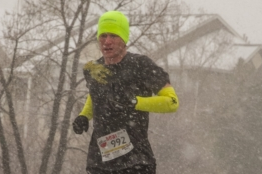(Edited from original post to remove duplicate heading and add running food review disclaimer.)
Before diving into anomalies, I just learned this week that I’ve been accepted to run on the 2019 Runners Roost Race Team. It involves racing a certain number of times during 2019 as well as volunteering in the running community and possibly with other traditional charities as part of the team. It’s an ambassador group on behalf of the Runners Roost brand and I’m looking forward to racing and working with them.
On to anomalies:
Will the 2:00:00 barrier be broken in the marathon? Most likely. When will this occur? There are three possibilities. The time will be slowly chipped away over the next several years, or someone will develop a new and unique strategy for attacking the time and be successful, or someone will have the race of their life and go sub-two. If the last possibility sounds the least likely or absurd, maybe it is, but maybe not.
There have been multiple performances by runners where they inexplicably ran far better than they did prior to that race. They all were experienced, usually professional runners so they already had many miles and races on their feet. Making that kind of jump in time could not just be a matter of having shown some promise as a runner and then getting into a better training program. And,considering that following this remarkable race their times never got close to it again, it raises the possibility that some runners may just have a once-in-a-lifetime race where everything clicks exactly the way they need at the exact right time and they exceed their normal expectations. Here are two examples.
In 2014, Dennis Kimetto set the world record in the marathon of 2:02:57. In spite of more well-regarded marathoners competing during and after that time, it was still four years before it was lowered to 2:01:39. Kimetto set the record at the Berlin Marathon. Coming into the race, he had an impressive resume but he also had never completed a marathon. Following his world record race, he has entered eight marathons and finished three with times of 2:05:50,2:11:44, and 2:14:55. It’s possible he has choked, or it’s also possible that he had the race of his life at the exact right moment.
Paula Radcliffe’s stunning marathon record of 2:15:25 in 2003 is probably the best well-known example of an exceptional running performance. Radcliffe had been and remained a phenomenal runner. There’s no doubt she could handle the pressure of being a top-tier competitor. Her second and third best times were 2:17:18 and 2:17:42. What’s interesting here is that the next fastest women’s marathon time after Radcliffe’s is 2:17:01 (women’s-only race world record), set in 2017 by Mary Keitany, and Radcliffe’s next-fastest two times are close to that. The 2:15:25 points to how dominant that run is in the context of the women’s marathon but it also suggests that Radcliffe had the race of her life at the right moment given that her next times were both around two minutes off her record. (Note: Radcliffe holds the world record for the marathon but they distinguish it from the 2:17:01 world record. Radcliffe was in the same race as the male marathoners and Keitany was not running among male competitors. In theory, Radcliffe could have paced off of men the whole race whereas Keitany was limited by traditional pacing rules and ran alone. For that reason, they distinguish the records.)
Back to a sub- 2:00:00 possibility. Dennis Kimetto’s second-best marathon timeis 2.3% slower than his fastest, Radcliffe’s is 1.39%.
With the current world record at 2:01:39, 1:59:59 just happens to be 1.38% faster than that. Did Eliud Kipchoge have a transcendent race that seemed beyond his normal capabilities when he ran the world record of 2:01:39? Possibly, but everyone knew he was capable of breaking the world record prior to that. Shattering it like he did was not expected and he ran an epic race, but considering he ran 2:00:25 in record-ineligible conditions, it wasn’t a shocking time.
The second fastest marathon time, 2:02:57, is 2.4% off of 1:59:59 and the third-fastest, 2:03:03, is 2.5%. Both are close to the percentages of other marathon performances where the runner seemingly rose above what they were predicted to run. Of course, the faster one gets, the more difficult it is to shave additional time and Radcliffe’s 1.3% might be a more realistic boundary for the top runners. It would take someone with Kipchoge or Keninisa Bekele’s ability to pull it off. I’m not making the argument that this is likely and there’s a reason that it’s easy to isolate cases like Dennis Kimetto and Paula Radcliffe, but if athletes occasionally have performances that transcend what they’re usually capable of, maybe it’s not out of the realm of possibility.
Running food review of the week: (note–gels, bars, chews, and other items affect everyone differently. Try them on a short run before using them for a key training run or race): Coffee Caramel Honey Stinger Waffle: There is a strong coffee flavor which I enjoy, accented by the caramel. It does have caffeine, which is appropriate. I used this after a 10K race and before a 3-mile cool down.Considering I had just raced, this worked very well as I felt good the whole time. Like other waffles, I would prefer to use this either before or after a run as it is a solid food.
Sources used:
https://www.runnersworld.com/races-places/a20823734/these-are-the-worlds-fastest-marathoners-and-marathon-courses/
http://www.letsrun.com
https://www.theguardian.com/sport/2013/apr/20/paula-radcliffe-london-marathon-record

Running anecdotes, running food reviews, some race coverage, and more